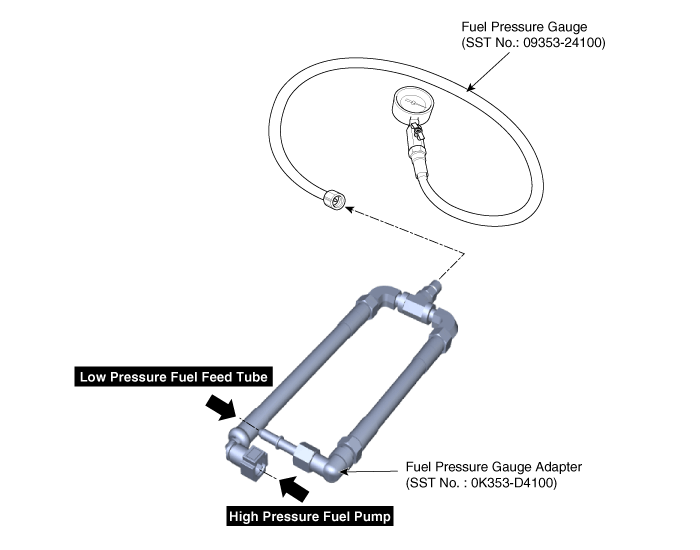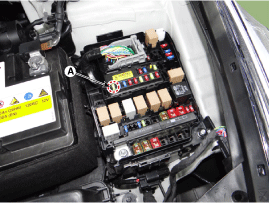Install the Special Service Tool (SST).
Disconnect the fuel feed tube from the delivery pipe.
There may be some residual pressure even after “Release Residual Pressure in Fuel Line” work, so cover the hose connection with a shop towel to prevent residual fuel from spilling out before disconnecting any fuel connection.
Install the special service tool for measuring the fuel pressure in between the fuel feed tube and the fuel delivery pipe (Refer to the figure below).


